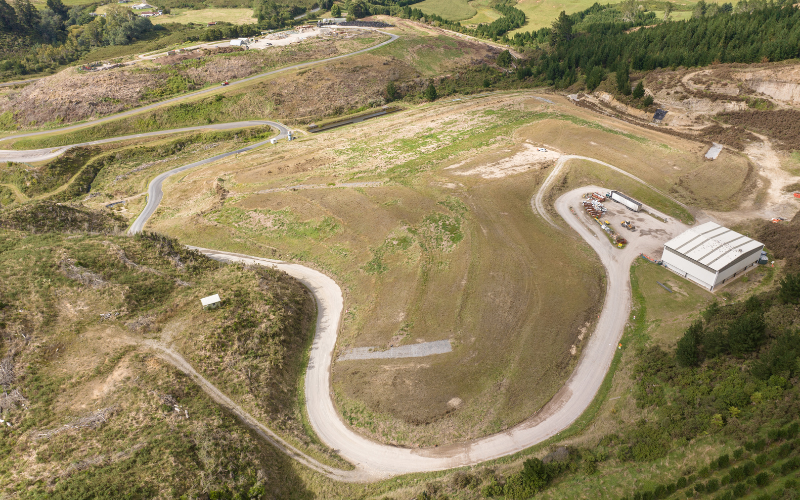Rotorua South Resource Recovery Park (Landfill Site)
About the Rotorua Landfill
The open face tip at the Rotorua landfill was capped and sealed in 2018. This site now operates as a refuse transfer station and recycling collection facility.
The decision to transition to a transfer station was made in 2016 in recognition of historic legacy issues associated with the open face facility, and following significant investment by Rotorua Lakes Council to make improvements to better protect our environment and public health and safety.
Today the landfill is well managed by Council’s contracted operator WM New Zealand, which has implemented many improvements on Council’s behalf.
Regular monitoring is undertaken to ensure the cap remains intact and that there is no adverse impact on surrounding waterways and environments from the closed landfill.
Rotorua district’s waste is transported from this transfer station to Tirohia, which has a facility that meets modern standards.
History of the Rotorua Landfill
- The landfill was established in 1970 as an open-face landfill. The original landfill was in 3 stages, with further stages added over time.
- In 1997, Stage 1 was closed and Stage 6 opened.
- Between 2008 and 2014, BOPRC issued a number of abatement or improvement notices to Council. The leachate system was re-engineered in an effort to address the issues.
- In September 2015, Council commissioned landfill experts Tonkin & Taylor to provide comprehensive engineering advice on the state of the current landfill and options for mitigation.
- Following this advice, in early 2016, the Council committed to significant investment to transition from an open face landfill to a capped and sealed facility and the construction of a waste transfer station.
- To give effect to that decision, in July 2016 the council contracted WM New Zealand (previously Waste Management) to carry out the construction work and manage the day-to-day operations at the facility. While the facility is managed by a contractor, as the consent holder, RLC would retain primarily responsible for what occurs at the site.
- Work towards capping and sealing the site started in 2017.
- In early 2017, with work to cap the landfill underway but not yet completed, a series of severe weather events caused saturation of the landfill site.
- On 6 April 2017 there was further significant rain. Stormwater mixed with leachate (a by-product of waste breakdown) breached the leachate disposal system and flowed onto land within the landfill site.
- The amount of rainfall in the 30 days prior to 6 April 2017 was described by experts as the equivalent of a one-in-200-year event. It was the heaviest period of rainfall on record in the Whakarewarewa catchment and additional significant rainfall on 6 April 2017 was more than the landfill system was capable of handling. The rainfall caused surface flooding and multiple slips and treefalls across the Rotorua district and Bay of Plenty region, closing roads. The rain event also caused the flooding of Edgecumbe.
- The effect of the breach on the receiving environment is not known but as a result, Bay of Plenty Regional Council brought six charges against Rotorua Lakes Council under the Resource Management Act, each carrying a maximum fine of $600,000 – a potential total liability of $3.6million
- Four of these (relating to green waste) were subsequently dismissed by the courts and a fifth was withdrawn by the Crown after Rotorua Lakes Council agreed to plead guilty to the remaining charge of breaching resource consent by discharging stormwater contaminated with leachate onto land in circumstances where it may enter a waterway.
- While there was no evidence of adverse environmental impact in waterways as a result of the leachate breach, Rotorua Lakes Council acknowledged the incident and extended an apology, without reservation, to mana whenua. Council accepted that it failed to meet its own expectations and that it let mana whenua and its neighbours down in this respect.
- The work to cap and seal the historic landfill was completed in 2018.



